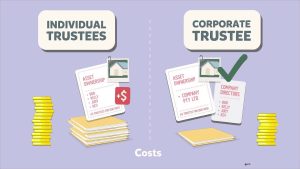Tax Efficiency in Self-Managed Superannuation Funds (SMSFs): A Competitive Edge
Introduction to SMSFs
Self-Managed Superannuation Funds (SMSFs) have become increasingly popular among Australians seeking greater control and flexibility over their retirement savings. Unlike traditional superannuation funds, SMSFs are managed by trustees who make investment decisions on behalf of the fund’s members. One of the key advantages of SMSFs is their potential for tax efficiency, which can provide a competitive edge in building wealth for retirement.
Understanding Tax Efficiency in SMSFs
Tax efficiency in SMSFs refers to the ability to minimize tax liabilities while maximizing investment returns within the superannuation structure. There are several strategies that SMSF trustees can employ to achieve tax efficiency:
1. Contribution Strategies
Effective contribution strategies can help optimize tax efficiency in SMSFs. By taking advantage of concessional contribution caps and utilizing strategies such as salary sacrificing, members can reduce their taxable income while boosting their superannuation savings. Additionally, non-concessional contributions can be made with after-tax income, providing tax-free investment growth within the fund.
2. Investment Allocation

Strategic investment allocation is crucial for maximizing tax efficiency in SMSFs. Trustees have the flexibility to invest in a wide range of asset classes, including equities, property, fixed income, and alternative investments. By carefully diversifying the portfolio and considering the tax implications of each asset class, trustees can minimize tax liabilities and enhance after-tax returns.
3. Pension Phase Planning
Transitioning to the pension phase is another important consideration for tax efficiency in SMSFs. Once members reach preservation age, they have the option to commence a pension from their SMSF. Pension payments are generally tax-free for members aged 60 and over, providing a tax-efficient source of income in retirement. By structuring pension payments strategically, members can further optimize their tax position and preserve their wealth for future generations.
The Competitive Edge of Tax Efficiency
Tax efficiency in SMSFs offers a competitive edge for investors seeking to build long-term wealth. By minimizing tax liabilities and maximizing after-tax returns, SMSFs can provide a more efficient vehicle for retirement savings compared to traditional superannuation funds. The ability to tailor investment strategies to individual circumstances and objectives allows SMSF trustees to optimize their tax position and achieve their financial goals more effectively. https://smsfauditshop.com.au/
Conclusion
In conclusion, tax efficiency is a key advantage of SMSFs that can provide a competitive edge in building wealth for retirement. By implementing effective contribution strategies, optimizing investment allocation, and planning for the pension phase, SMSF trustees can minimize tax liabilities and maximize after-tax returns within the superannuation structure. As Australians continue to seek greater control and flexibility over their retirement savings, SMSFs are likely to remain a popular choice for those looking to achieve long-term financial security.



